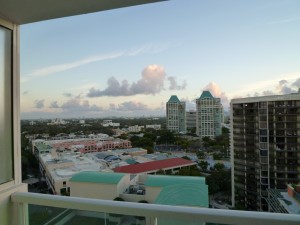Ed Glaeser’s new book on cities has just two index entries for “Miami.” One is a reference to the city providing second-homes for Latin American millionaires, and the other observes that Florida is a low consumer of natural gas, since Miami is warm in the winter. Miami is the nation’s seventh largest metro area, ahead of Washington, D.C. and just behind Houston, but it doesn’t loom large in the national imagination. I’m not sure why that is. It may be the cultural divide—this has definitely become a Latin American outpost on the American mainland. Or it may be the region’s history as a winter getaway—tourism is still the city’s key industry. But then so are international banking and shipping. On a recent visit I pondered these questions. The city is working hard to remake itself as a cultural hotspot, having recently built the hulking twin halls of the Carnival performing arts center downtown, the New World Center in South Beach, and established the Miami Basel art show. But as Las Vegas, that other leisure city, demonstrates, it takes a long time to live down your history.


